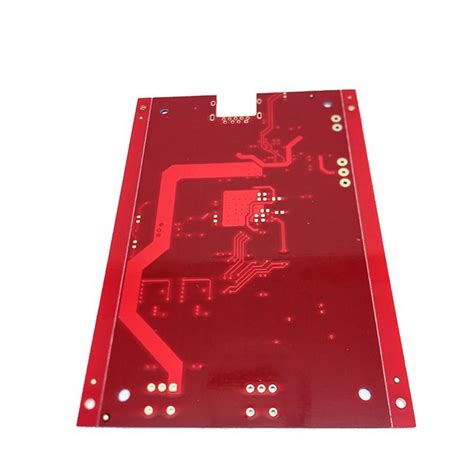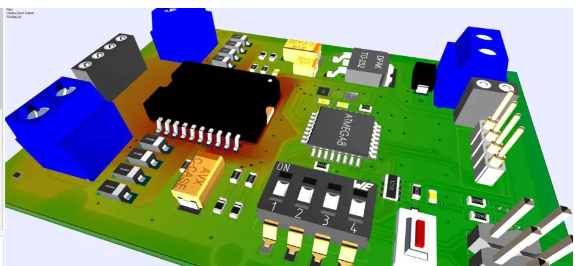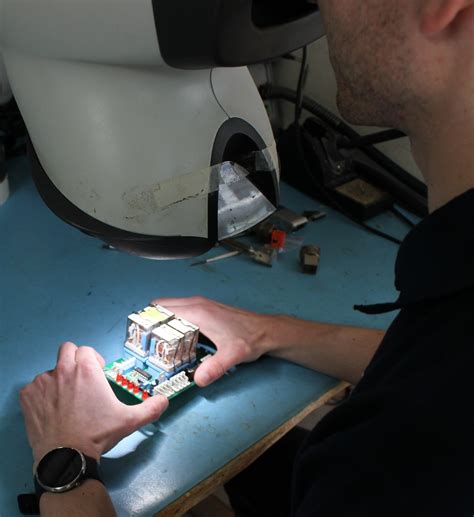Unlocking the Secrets of Bare Copper PCBs for Enhanced Performance
Key Takeaways
Understanding the benefits of bare copper PCBs is essential for those involved in pcb manufacturing. Unlike traditional coated alternatives, bare copper offers superior electrical performance due to its excellent conductivity. When you choose bare copper PCBs, you are prioritizing reliability and efficiency for your projects. This shift in design can lead to lower pcb manufacturing costs and improved overall product quality. It’s crucial to partner with reputable pcb manufacturing companies that recognize the unique requirements of working with bare copper, ensuring optimal results from start to finish. As you navigate your pcb manufacturing business, consider how the integration of bare copper technology not only enhances performance but also aligns with best practices for electrical conductivity. The right approach can make a significant difference, solidifying your position in a competitive market while meeting the demands of various applications effectively.
Unlocking the Basics: What are Bare Copper PCBs?
Bare copper PCBs are printed circuit boards that utilize bare copper as their conductive layer, without any additional coatings. This choice affects several factors in PCB manufacturing, including electrical conductivity, thermal performance, and overall reliability. The use of bare copper can enhance performance due to its superior conductivity compared to standard coated alternatives. When you choose bare copper, you’re opting for a material that allows for more efficient current flow—an essential factor in high-frequency applications like RF circuits.
In the context of PCB manufacturing companies, the interest in bare copper stems from its advantages in reducing material costs while improving signal integrity. This can ultimately lead to lower PCB manufacturing costs and increased competitiveness for your PCB manufacturing business. However, it is crucial to keep some design considerations in mind to harness these benefits effectively.
“When investing in bare copper PCB technology, consider both the short- and long-term benefits regarding performance and cost efficiency.”
Therefore, understanding the fundamentals of bare copper PCBs not only informs your design choices but also enhances your product’s overall efficiency across various applications.
The Advantages of Using Bare Copper in PCB Design
When you consider bare copper PCBs, you’ll find several advantages that can significantly enhance the performance of your electronic designs. One of the primary benefits is the remarkable electrical conductivity provided by bare copper, which improves signal integrity and reduces resistive losses. This becomes crucial in high-frequency applications, where even minor losses can impact overall functionality. Furthermore, utilizing bare copper can aid in thermal management, allowing for efficient heat dissipation—an aspect that is often overlooked but vital for device longevity.
In the realm of pcb manufacturing, bare copper materials are particularly appealing because they eliminate the need for additional coatings, thereby reducing pcb manufacturing costs. This streamlined approach not only lowers expenses but also simplifies the pcb manufacturing process, enabling you to mitigate potential issues related to coating materials and ensuring a more robust final product.
While many pcb manufacturing companies offer traditional coated alternatives, opting for bare copper allows you to take advantage of its superior performance characteristics without compromising on quality. Keeping these factors in mind during your design phase will empower you to make informed decisions and maximize the benefits that bare copper PCBs have to offer. As you delve into your pcb manufacturing business, remember that adopting the technology behind bare copper can set your products apart in a competitive market.
Improving Electrical Conductivity: The Role of Bare Copper PCBs
When selecting materials for your PCB manufacturing, one crucial aspect to consider is the electrical conductivity. Bare copper PCBs offer significant advantages in this regard. The use of bare copper enhances the conductive properties of your boards, minimizing resistance and ultimately improving the efficiency of electrical signals. This is particularly essential for high-frequency applications, where signal loss can lead to decreased performance.
In the realm of PCB manufacturing companies, opting for bare copper can be a game changer. It not only ensures superior connectivity but can also influence the overall PCB manufacturing cost by potentially reducing the need for additional coatings or treatments. This choice translates to a stronger, more reliable product, enabling a more streamlined PCB manufacturing business process.
It’s worth noting that while bare copper PCBs may require careful handling due to their susceptibility to oxidation, implementing proper design considerations and best practices can mitigate these issues. Ensuring robust encapsulation during production will maintain that essential conductivity over time, making bare copper an excellent option for those looking to enhance performance within their electronic applications.
Design Considerations for Bare Copper PCB Manufacturing
When engaging in pcb manufacturing with bare copper PCBs, there are several important factors to consider to ensure optimal performance and reliability. First, the choice of materials plays a crucial role; the quality of the copper utilized must be high to reduce oxidation and enhance electrical conductivity. Moreover, the manufacturing process should be tailored to achieve precise copper thickness, which impacts not only performance but also the overall pcb manufacturing cost.
It’s essential to maintain a clean environment during the pcb manufacturing process to prevent contamination that can weaken the integrity of your circuits. Collaborating with reputable pcb manufacturing companies can also offer insights into best practices while ensuring adherence to quality standards. Additionally, effective surface treatments may be necessary, depending on your specific application requirements. As you proceed in your pcb manufacturing business, remember that focusing on these design considerations will significantly influence your final product’s reliability and efficiency in various applications.
For more information about best practices in PCB design and manufacturing, consider visiting Andwin PCB.
Best Practices for Ensuring Reliability in Bare Copper PCBs
To maximize the reliability of bare copper PCBs, several best practices should be considered during the PCB manufacturing process. First and foremost, ensuring a thorough cleaning of the copper surfaces is essential. Contaminants such as oils, dust, or oxidation can significantly affect electrical performance and longevity. Utilize industry-standard cleaning solutions and methods to prepare the copper properly before any further processing.
Next, it’s vital to monitor the pcb manufacturing cost by selecting high-quality materials that provide durability without compromising budget constraints. Working with reputable pcb manufacturing companies that specialize in bare copper technology can lead to better results as they often have experienced engineers familiar with these specific requirements. Additionally, consider implementing surface treatments post-manufacturing to boost oxidation resistance—this can help maintain effective conductivity over time.
You should also pay attention to the design layout of your PCBs. Adequate spacing and trace width for power distribution can prevent overheating and failure during operation. Thermal management techniques will further enhance reliability by dissipating heat effectively within your designs.
Lastly, conducting rigorous testing after production is crucial for identifying potential weaknesses early on. Embrace strategies such as thermal cycling tests and moisture exposure assessments to ensure that your bare copper PCBs meet the desired reliability standards for their intended application. By following these practices, you can enhance performance while minimizing risks associated with bare copper in your pcb manufacturing business.
Applications Where Bare Copper PCBs Shine
When considering the use of bare copper PCBs, it’s essential to recognize the diverse applications where they truly excel. In sectors such as telecommunications, automotive electronics, and consumer electronics, bare copper PCBs provide superior performance due to their excellent electrical conductivity. Unlike traditional coated alternatives, these PCBs retain minimal surface oxidation, which can significantly influence the efficiency of signal transmission. For instance, in high-frequency applications, where signal integrity is paramount, the use of bare copper can minimize losses that might typically occur with other materials.
Moreover, your choice of bare copper PCB manufacturing can impact design sophistication. Many modern devices demand smaller and more intricate designs that require high reliability. Here, the effectiveness of bare copper facilitates tight tolerances and complex layer stacking, making it ideal for compact systems. Furthermore, implementing best practices in PCB manufacturing ensures that you can achieve optimal performance without compromising on quality.
As you evaluate costs associated with different types of materials, keep in mind that while the PCB manufacturing cost for bare copper may initially be higher due to specialized handling and processing techniques, the long-term benefits often outweigh this investment. The durability and reliability enhance the overall lifespan of the devices in which they are used, creating a substantial return on investment for any PCB manufacturing business and ensuring robust operational efficiency across multiple applications.
In summary, whether you are designing a circuit for a new telecommunications device or enhancing automotive systems with cutting-edge technology, recognizing the versatility and causal benefits of bare copper PCBs is key to optimizing performance across various sectors.
Comparing Bare Copper PCBs to Traditional Coated Alternatives
When evaluating bare copper PCBs against traditional coated alternatives, it becomes clear that each offers unique benefits and drawbacks that can significantly affect your PCB manufacturing decisions. Bare copper boards are celebrated for their superior electrical conductivity, making them an excellent choice for applications where signal integrity is paramount. Unlike their coated counterparts, which often utilize protective layers to enhance durability, bare copper PCBs can reduce the overall PCB manufacturing costs due to their straightforward production process. However, you should consider the implications of oxidation; without a protective coating, bare copper is prone to tarnishing, which could affect performance over time.
If you’re part of a PCB manufacturing business, understanding these dynamics will be crucial when presenting options to clients. While the initial investment in bare copper might seem lower, potential longevity issues could lead to increased maintenance costs in the long run. Additionally, you can expect that PCB manufacturing companies focused on quality will emphasize rigorous testing protocols when producing bare copper boards to ensure reliability and performance longevity. Ultimately, the decision between bare copper and coated alternatives should align with your project requirements and performance expectations. Keep in mind that your choice not only impacts immediate functionality but also long-term operational efficiency in various applications such as high-frequency circuits or power electronics.
Conclusion
In conclusion, the exploration of bare copper PCBs reveals significant implications for pcb manufacturing and the broader pcb manufacturing business. By choosing bare copper, you are not only enhancing electrical conductivity but also ensuring greater reliability in performance-critical applications. It’s important to consider the pcb manufacturing cost, as investing in quality materials can lead to long-term savings by minimizing issues related to signal integrity and thermal management. Furthermore, understanding the benefits of bare copper can set you apart from competitors within the realm of pcb manufacturing companies, allowing you to provide innovative solutions tailored to your clients’ specifications. As you move forward in your designs, remember that each decision impacts not just your project’s success, but also the overall reliability and effectiveness of the end product. In this way, embracing bare copper technology could very well be a strategic play in elevating your competitive edge in the industry.
FAQs
What are the advantages of using bare copper in PCB manufacturing?
Bare copper PCBs offer superior electrical conductivity, making them ideal for high-performance applications. This leads to more reliable connections and can help reduce signal loss, ultimately improving overall circuit performance.
How do I determine the pcb manufacturing cost for bare copper PCBs?
The pcb manufacturing cost can vary based on factors such as the complexity of the design, quantity ordered, and the processes involved in producing bare copper PCBs. It’s wise to consult with reputable pcb manufacturing companies to obtain quotes tailored to your specific needs.
What are the best practices for ensuring reliability in bare copper PCB manufacturing?
To maximize reliability, focus on proper surface treatment, avoid oxidation during production, and ensure thorough testing. These techniques help maintain high conductivity and minimize defects throughout the pcb manufacturing business.
Are there specific applications where bare copper PCBs are preferred?
Yes, bare copper PCBs excel in applications requiring high thermal conductivity and low resistance, such as power electronics and RF communication devices. Their unique properties make them suitable for various advanced technology sectors.







